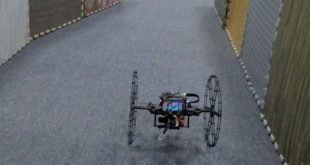
 Around the world, countries are increasingly turning to nuclear energy as a means to combat climate change and enhance energy security. With the emergence of novel reactor designs and innovative modular manufacturing methods, the deployment of advanced reactors, including small modular reactors (SMRs), presents both opportunities and challenges. To facilitate the safe and secure deployment of these advanced reactors, the International Atomic Energy Agency (IAEA) launched the Nuclear Harmonization and Standardization Initiative (NHSI) in 2022.
Around the world, countries are increasingly turning to nuclear energy as a means to combat climate change and enhance energy security. With the emergence of novel reactor designs and innovative modular manufacturing methods, the deployment of advanced reactors, including small modular reactors (SMRs), presents both opportunities and challenges. To facilitate the safe and secure deployment of these advanced reactors, the International Atomic Energy Agency (IAEA) launched the Nuclear Harmonization and Standardization Initiative (NHSI) in 2022.
Setting Priorities for a Sustainable Future
Recently, over 120 participants of the NHSI, including regulators, designers, operators, and other stakeholders, convened to assess the progress made since the inaugural meeting last year and establish priorities for the upcoming year. The NHSI aims to support the timely deployment of advanced reactors, maximizing their contribution towards achieving net zero goals, by harmonizing regulatory approaches and standardizing industrial practices. By the end of 2024, the NHSI plans to provide technical publications and toolkits to aid in the deployment process.
Working Towards Harmonized Deployment
The NHSI participants operate within two distinct yet interconnected tracks: the NHSI Regulatory Track and the NHSI Industry Track. Both tracks consist of topical working groups that have held 16 meetings in the past year.
IAEA Director General Rafael Mariano Grossi emphasized the benefits of the NHSI’s efforts. Harmonization of the regulatory process reduces uncertainty and lowers the cost of building and deploying SMRs. In his opening remarks, he stated, “Working towards global standardization of approaches, such as developing international generic user requirements, could increase trade and create economies of scale for manufacturing, construction, and operation of SMRs.” [^1^]
A Framework for Global Review
Under the Regulatory Track, participants have developed approaches to facilitate collaborative SMR regulatory reviews among countries, allowing for the sharing of resources and knowledge. Paula Calle Vives, Senior Nuclear Safety Officer at the IAEA, expressed that implementing these approaches will enable regulators to learn from each other, fostering trust in different regulatory frameworks. The IAEA plans to gather feedback on the implementation of these approaches and explore the possibility of establishing an information repository for regulatory reviews. Anna Bradford, Director of Nuclear Installation Safety at the IAEA and Chair of the Regulatory Track, clarified that the objective is not to harmonize regulatory requirements but to harmonize how these requirements are met and demonstrated. [^2^]
One of the working groups in the Regulatory Track is dedicated to developing a process that leverages other regulators’ reviews to save resources and benefit from their expertise and experience. Additionally, the group is working on a collaborative approach for regulators to share their perspectives on reviews of the same nuclear reactor design. The majority of participants support the avoidance of duplicate regulatory reviews. The aim is to enhance national reviews by making the most of international efforts and knowledge, minimizing the need for design changes resulting from regulatory differences. Director General Grossi affirmed, “Together, we can establish a common basis for Member States’ regulatory decisions while preserving their sovereignty.” [^1^]
Standardizing Industrial Approaches
NHSI also focuses on establishing common approaches in the nuclear industry regarding codes and standards used throughout the design, manufacturing, construction, commissioning, and operation of advanced reactors, including SMRs. The standardized approach is particularly crucial for SMRs, as their business model often relies on serial production, leading to cost and time savings after the initial deployment.
The Industry Track’s primary objective is to harmonize high-level user requirements. By developing an international reference, the NHSI aims to assist regulatory bodies in understanding the expectations of future licensees and aiding countries venturing into or expanding their nuclear power capabilities in structuring their specifications for potential suppliers.
Additionally, the Industry Track is establishing a network and associated platform, called the IAEA Network for Experiment and Code Validation Sharing (NEXSHARE). NEXSHARE, set to launch next year, will facilitate resource sharing regarding experiments and code validation for SMRs. Aline des Cloizeaux, Director of Nuclear Power at the IAEA and Chair of the Industry Track, clarified that the platform will focus on identifying available information, ongoing work, existing gaps, and the facilities currently accessible rather than directly sharing data. [^3^]
Promoting Collaboration for a Sustainable Outcome
During the recent meeting, regulatory and industry representatives provided feedback and suggestions on the progress made thus far and identified potential areas for improvement. The work of the NHSI is timely and relevant, as it supports both established and emerging nuclear power countries in their transition towards clean energy and meeting energy demands. Director General Grossi emphasized the importance of collaboration, stating, “NHSI can be a game changer if we all work together and commit our resources to bring it to a successful outcome.” [^1^]
The NHSI comprises 30 countries, 94 unique organizations, and over 200 contributors. The next plenary session is scheduled for 2024, highlighting the continued commitment to advancing the deployment of advanced reactors worldwide. Through the harmonization of regulatory approaches and standardization of industrial practices, the NHSI is playing a pivotal role in facilitating the global transition towards a sustainable future powered by nuclear energy.
References
Source link
 Innovation Discoveries Latest Scientific Discoveries in Innovation
Innovation Discoveries Latest Scientific Discoveries in Innovation



